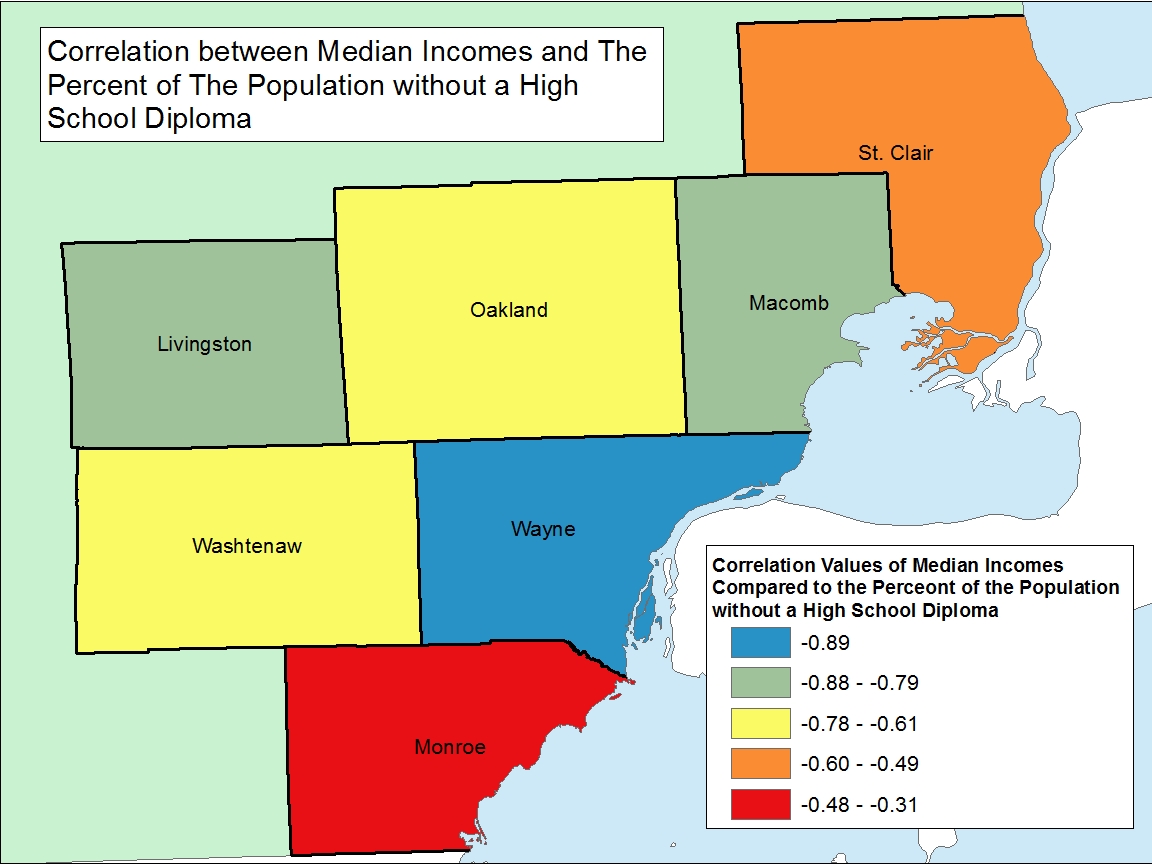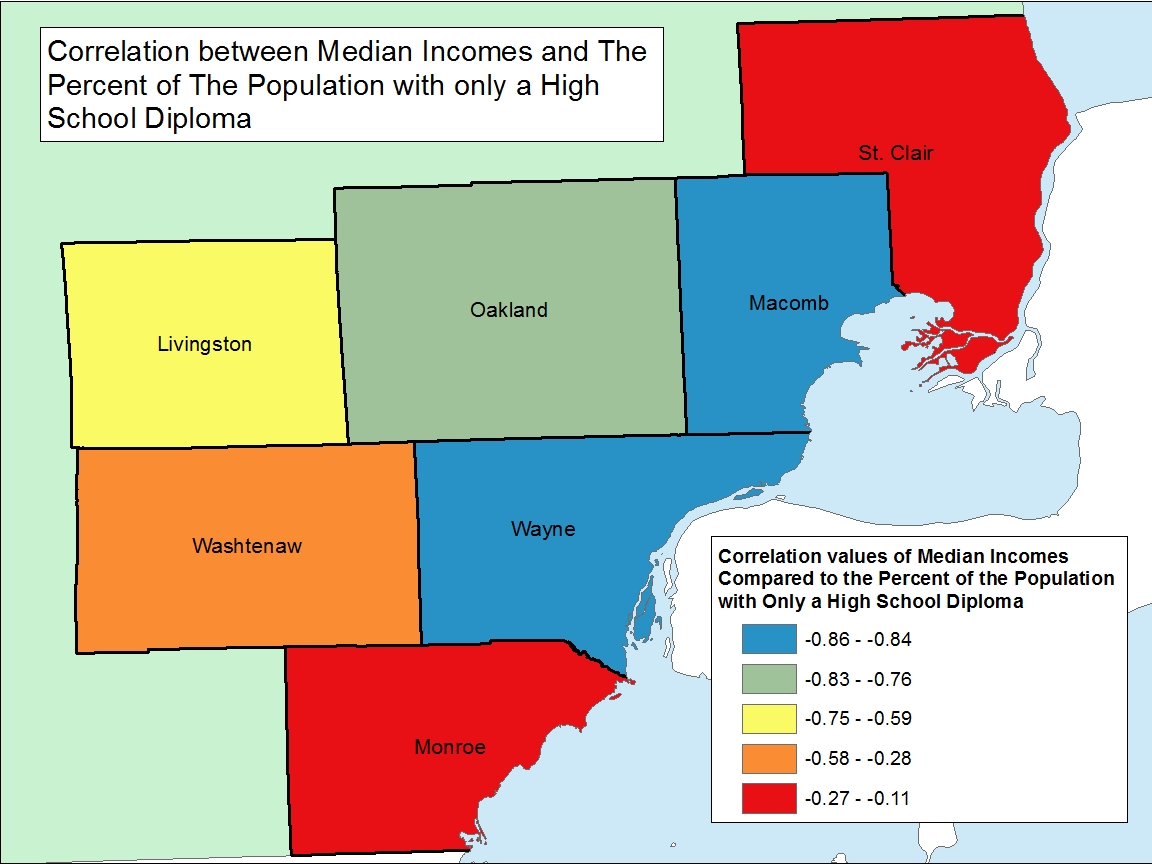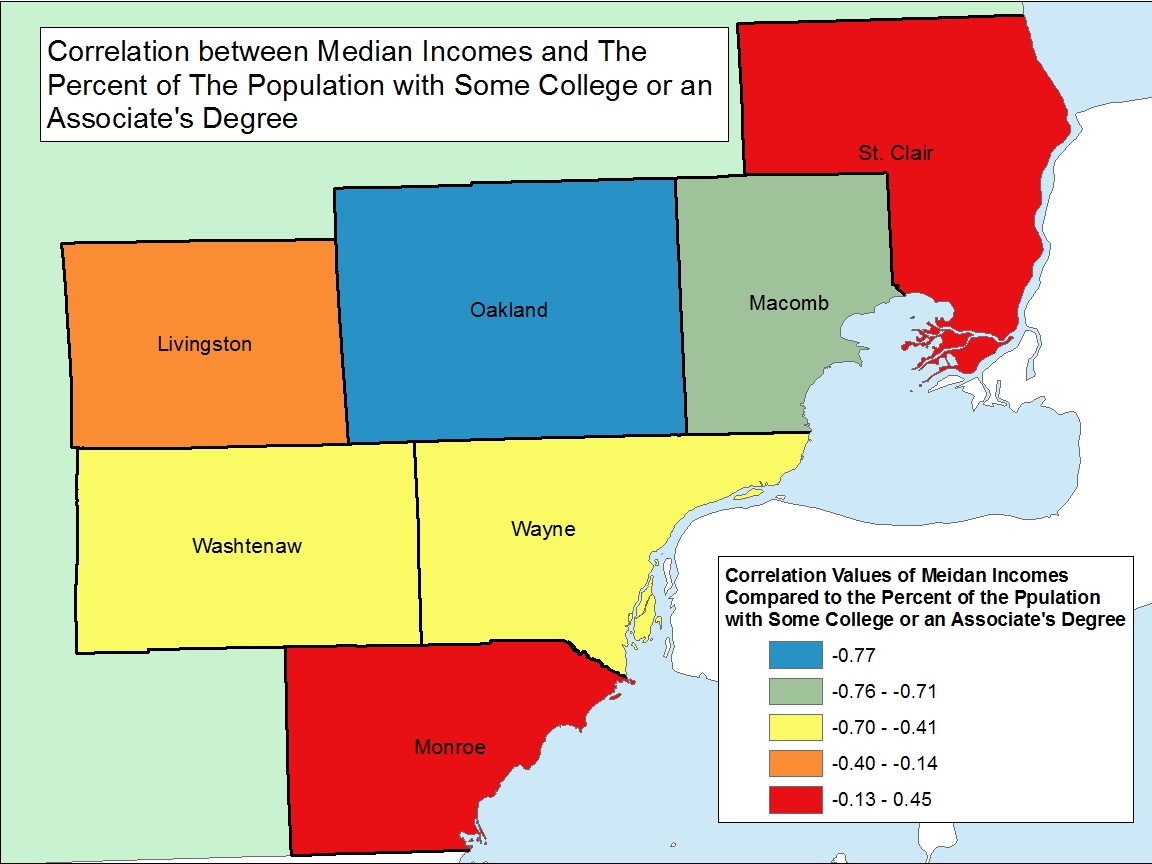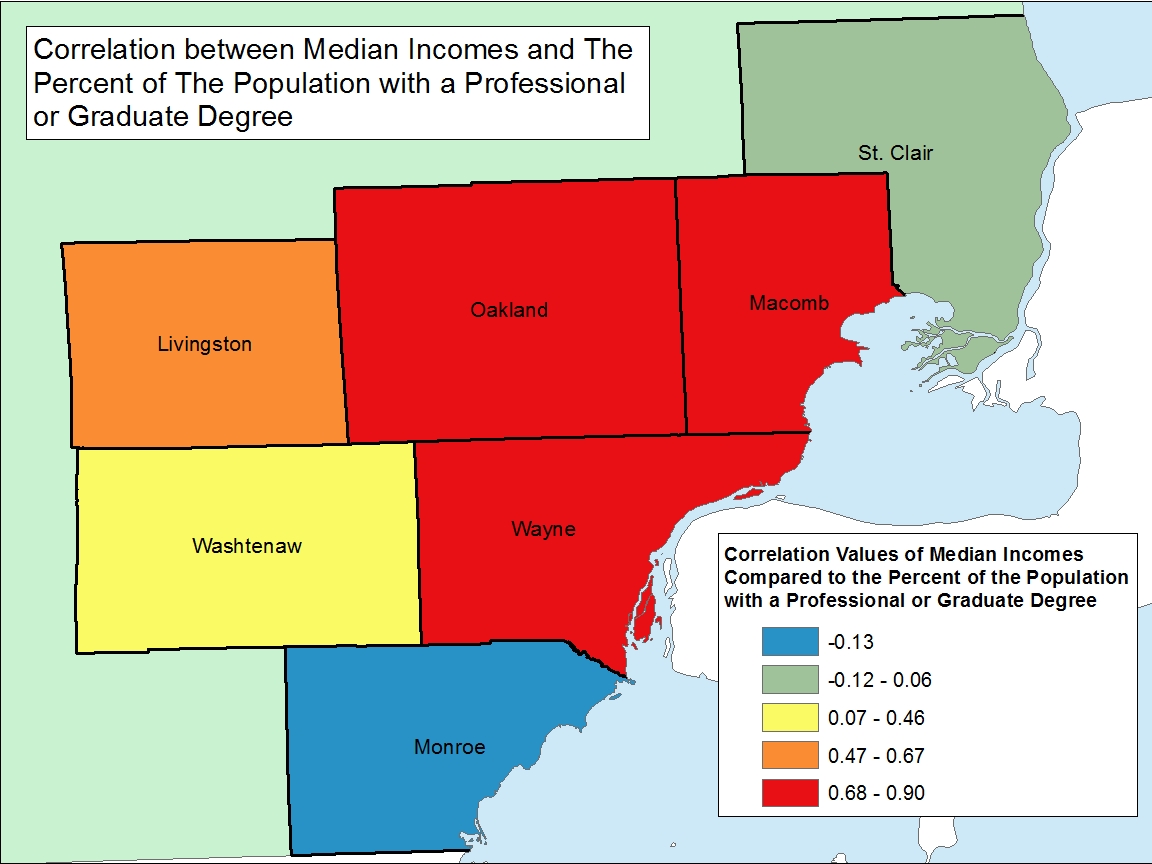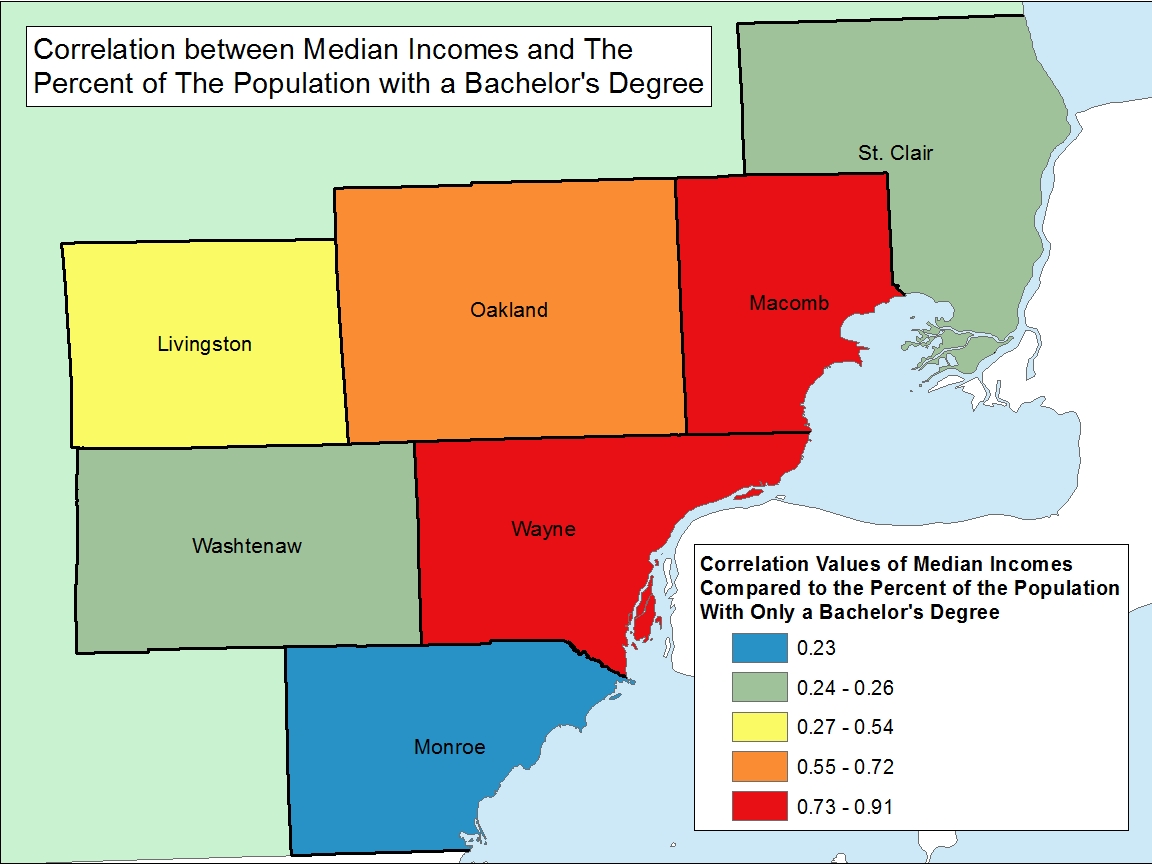In our last post we showed there is an area of overlapping high median incomes and high educational attainment running through Washtenaw County, western Wayne County, southern Oakland County and western Macomb County with nearly the opposite—lower median income and lower educational attainment–south of that in the region. In this post, we discuss explicitly the correlation between the levels of education examined in the last post (less than high school education, high school education, associate’s degree or some college education, bachelor’s degree, and graduate/professional degrees) and median incomes. The correlations are calculated for medians and percentages of municipalities across the region.
A correlation is statistical technique that can be used to describe the relationship between two variables. The correlation coefficient, often expressed as ‘r,’ is a numerical value that is always between +1 and -1. When r is closer to +1, it implies a positive correlation; as one variable increases, the other does as well. When r is closer to -1, it implies an inverse correlation; as one variable increases the other decreases. When the value of r is closer to 0 the implication is that there is no relationship between the two sets of data.
| Educational Attainment | Correlation Value |
| Achieved less than a high school diploma | -0.74 |
| Achieved only a high school diploma | -0.71 |
| Achieved some college or an associate’s degree | -0.57 |
| Achieved only a bachelor’s degree | 0.75 |
| Achieved a graduate or professional degree | 0.77 |
Looking first across the region incomes tend to be lower for those municipalities with a higher percentage of people who do not have a high school degree, with a correlation of -0.74. This tends to indicate that less education leads to lower incomes. At the same time, it could mean that people with lower incomes have less of chance of completing their education. For those with a high school diploma the effect was slightly smaller, with a correlation of -0.71, and similarly for those with some college or an associate’s degree the correlation was -0.57.
For those at the upper end of education distribution the opposite holds true—there is a positive correlation between higher educational levels and higher incomes. Across Southeast Michigan for the municipalities with a higher percentage of people with a bachelor’s degree, incomes tend to be higher, with a correlation of 0.75. The relationship between income and educational attainment is even stronger for those who have attained graduate or professional degree, with a correlation of 0.77.
Next we examined these relationships at the county level—for all municipalities in a county. Of the seven counties in the region, Wayne County had the strongest correlations of (0.91) in relation to those with bachelor’s degrees and the median income. For those with graduate or professional degrees in Wayne County the correlation was 0.90 percent. Monroe County had the weakest correlation value between those with bachelor’s degrees and the median income, with a correlation value of 0.22; it also had the weakest correlation between income and those with graduate or /professional degrees, with a correlation value of at -0.13 percent. Such values for Monroe County indicate that the relationship between higher levels of education attainment and higher median incomes are weakened or reversed in that largely rural setting. For several of the other counties, the correlation between these variables was much greater. In addition to Monroe County having a weak relationship between median income and those with a bachelor’s degree, there was also a weak relationship between those same two variables for St. Clair and, surprisingly, Washtenaw counties. For Washtenaw, it may occur because there are many students with higher education who are still pursuing degrees and have relatively lower incomes.
At the other end of the education spectrum, there exist a strong tendency for lower incomes to be associated with lower levels of education. Each county has either a moderate to strong correlation between incomes and lower levels of education. Monroe County again had the lowest correlations between median income and educational attainment for attainment, this time for less than a high school education and up to a high school education.
Overall, these analyses show a range of correlations across counties between higher median incomes and higher levels of educational attainment, some high and positive, others weak. Monroe County stands out as the only county one where there was a weak correlation between median income and all levels of educational attainment. It could be speculated this is because it is a more rural county and much of the work there relates to agriculture, work that is often learned at home within families. In southeastern Michigan as a whole, there are relatively strong positive and inverse correlations between incomes and education attainment. There is a positive correlation between those who have achieved a graduate or professional degree and incomes–people with higher education tend to have higher incomes. There is an inverse relationship between those who have not achieved a high school diploma and incomes–those with less education tend to have lower incomes.
